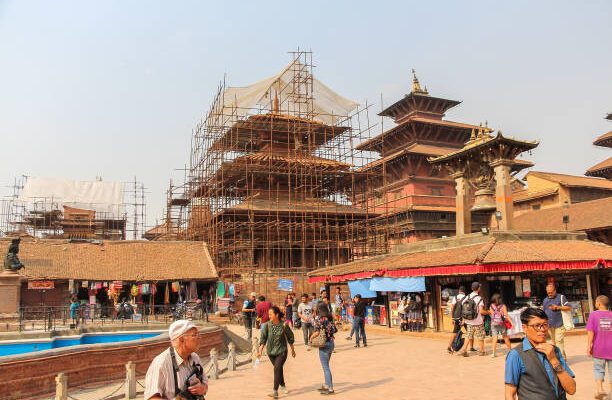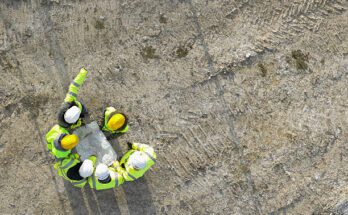Preserving and maintaining ancient structures is not an easy task, but it is a crucial one. These buildings hold historical, cultural, and architectural significance, and they provide a link to our past. In this comprehensive guide, we will explore the steps and considerations involved in saving and protecting these precious structures. From determining their significance to securing funding and finding partners, we will cover it all. Let’s embark on this journey to preserve and maintain our heritage for future generations.
Understanding the Significance of Ancient Structures
 (Photo from istock)
(Photo from istock)
Before starting any preservation project, it is important to determine the significance of the ancient structure. Consider its historical, cultural, and architectural importance. Was the building witness to significant events? Does it hold unique architectural features? Understanding the significance will help raise awareness, apply for grants, and meet preservation guidelines. Collaborate with local historians, community leaders, and past owners to gather information and consider getting the building listed on local, state, and federal historic registers.
Finding the Purpose of the Ancient Structure
To save an ancient structure, it is essential to identify its future purpose. Without a clear vision, the building may fall into disrepair and lose its value. Explore various options such as residential, commercial, museum, or nonprofit use. The new purpose should preserve the historic characteristics while adapting the building for modern needs. Once you have identified the purpose, you can proceed with the physical preservation steps.
Building Partnerships for Preservation
Preserving an ancient structure is not a solo endeavor. Seek partners who share your passion and can contribute to the project’s success. Historical groups, community organizations, local government, state historic preservation officers, and developers can all play vital roles. Historical societies and preservation groups can provide expertise and connections, while local government can offer support in navigating regulations and provide financial assistance. Building a strong coalition will increase your chances of success.
Securing Funding for Preservation of Ancient Structures
 (Photo from istock)
(Photo from istock)
Funding is often the biggest challenge in preserving ancient structures. Restoration and maintenance can be costly, so explore different sources of financing. State grants specifically allocated for historic preservation are available in many states. Tax credits and exemptions can also help reduce costs, especially for nonprofit organizations and developers involved in adaptive reuse projects. Private foundations, philanthropic trusts, individual donors, and community donations are additional sources of funding. Plan and execute fundraising campaigns to generate awareness and support for your project.
Learning from Success Stories
Gaining inspiration from successful preservation projects can provide valuable insights and guidance. Reach out to historical societies and preservation groups that have completed similar projects. Their experiences and advice can help you navigate challenges and learn from their achievements. By studying success stories, you can gain practical knowledge and apply proven strategies to your own preservation project.
Identifying Threats to Ancient Structures
Understanding the threats faced by ancient structures is crucial for effective preservation. Common threats include disrepair, abandonment, developers’ plans, community growth, and weather damage. Neglect and lack of maintenance can lead to gradual deterioration and eventual condemnation. When a building remains unused or abandoned, it becomes vulnerable to damage from the elements and intruders. Developers often prioritize modernization over preservation, putting historic structures at risk. Additionally, changes in community planning and severe weather events can pose significant challenges to the preservation of ancient structures.
Preservation Methods: Exploring Different Approaches
Preservation methods vary depending on the unique circumstances of each ancient structure. Here are six common approaches to consider:
-
Preservation
Preservation focuses on protecting and conserving the historical significance of the building. Original materials are prioritized, which can add to the cost and limit future uses.
-
Restoration
 (Photo from istock)
(Photo from istock)
Restoration aims to return a historic building to its original state during a specific time period. Historic documents and original building materials and techniques are utilized to recreate the building’s original appearance.
-
Rehabilitation
Rehabilitation involves making necessary repairs and alterations to keep the building functional and useful. Upgrades and additions are allowed, while retaining portions of historical or cultural value.
-
Adaptive Reuse
 (Photo from istock)
(Photo from istock)
Adaptive reuse modifies the building’s original purpose to accommodate new uses while preserving its historic characteristics.
-
Mothballing
Mothballing is a temporary solution when restoration is not immediately feasible. The building is closed and protected to prevent further damage until resources or a clear vision for its future become available.
-
Building Relocation
In cases where preservation in the original location is not possible, physically moving the building to a new location may be the only option. While this can be costly and pose challenges, it saves the structure from destruction.
Moving Ancient Structures: Considerations and Tips
Moving an ancient structure requires careful planning and consideration. Here are some important factors to keep in mind:
- Feasibility: Ensure there is enough space to transport the building, considering obstacles like utility lines and railroad crossings.
- Structural Soundness: Assess the building’s structural integrity and make necessary repairs before the move.
- Finding a New Location: Secure a suitable location near the original site, preferably less than a mile away.
- Historical Value: Understand that moving a building may affect its historical value, potentially impacting its status on historic registers.
- Partnering with an Experienced Contractor: Work with a reputable building moving company that specializes in historic structures to ensure a successful move.
Contacting Preservation Experts for ancient structures
When undertaking a preservation project, it is beneficial to consult preservation experts . With years of experience, they offer expertise in lifting and moving historic structures. Their team can provide guidance, estimates, and support throughout the preservation process.
Additional Resources for Historic Preservation
 (Photo from istock)
(Photo from istock)
For further information and resources on historic preservation, refer to the following organizations and online references:
- State Historic Preservation Offices: Contact your state’s preservation office for guidance and funding opportunities.
- Fundraising and Grant Resources: Seek assistance from nonprofit organizations and professional fundraising consultants.
- Community Engagement: Build relationships with community leaders, media, and local organizations to generate support and awareness for your preservation project.
Conclusion
Preserving and maintaining ancient structures is a challenging but rewarding endeavor. By understanding the significance of these buildings, identifying their purpose, building partnerships, securing funding, and implementing appropriate preservation methods, we can ensure that our heritage remains intact for future generations. With careful planning, collaboration, and the support of preservation experts, we can save these historical, cultural, and architectural treasures. Let us embark on this journey to preserve our past and shape a brighter future.
Reference:
Wolfe
Searching for tips to recycle the construction waste, what are you waiting for, click on the link below:
How to recycle and reuse construction waste




